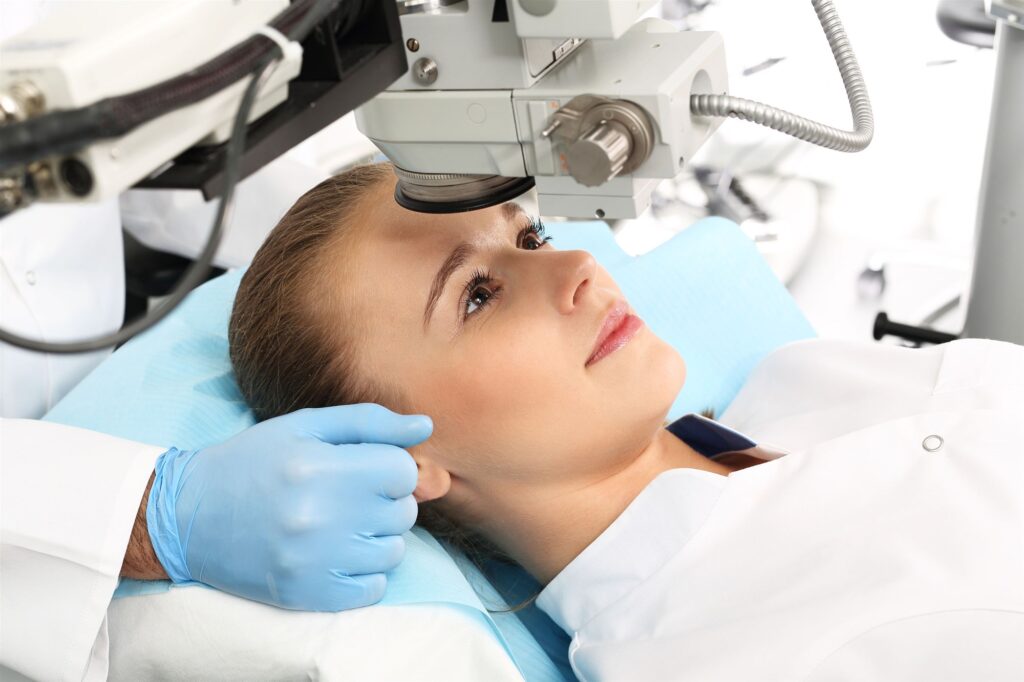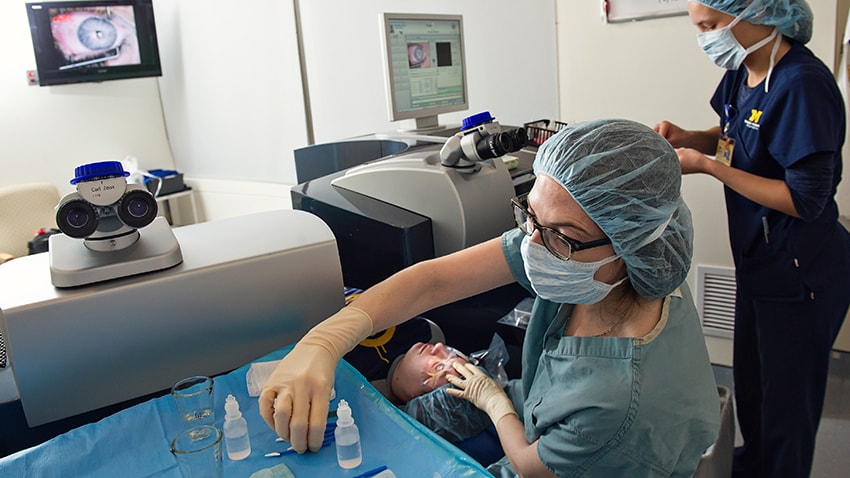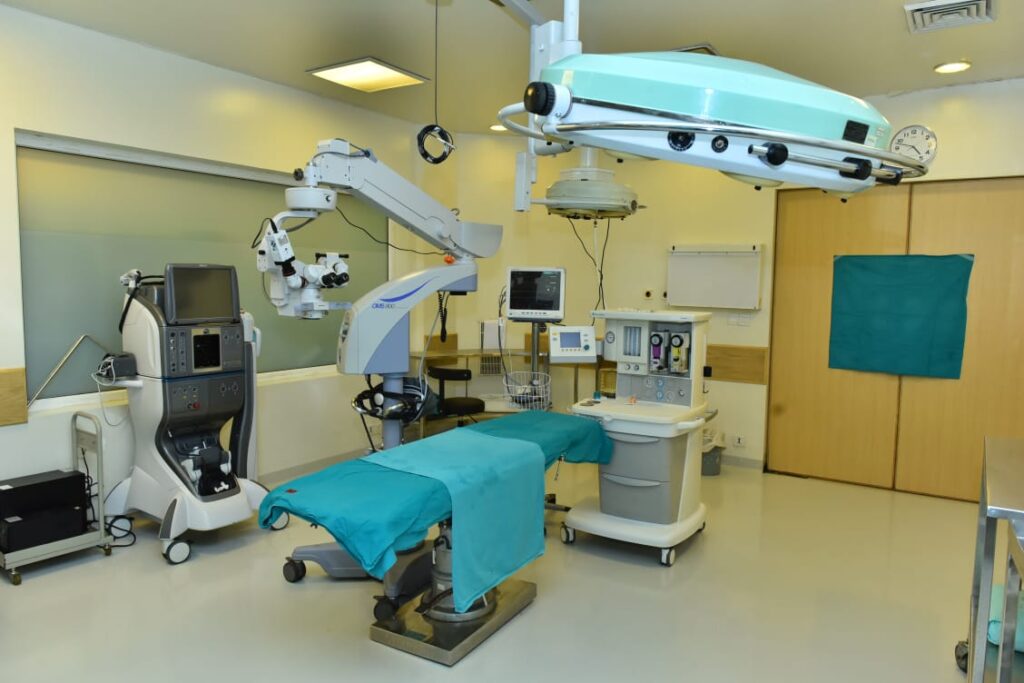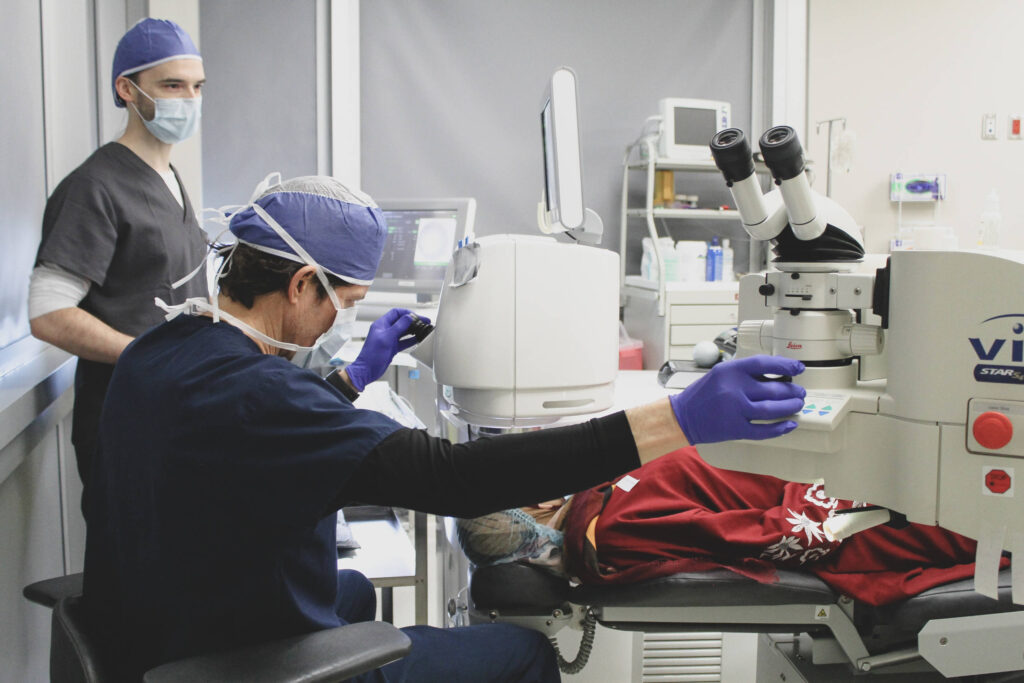Cataracts, a clouding of the eye’s natural lens, affect millions of people worldwide. As the leading cause of blindness, cataracts significantly impact an individual’s vision and quality of life. Fortunately, advancements in cataract surgery have revolutionized treatment options, allowing for improved precision and excellence in patient care.
Understanding Cataracts: A Brief Overview
Before exploring the latest innovations in cataracts surgery, it is essential to understand the condition and its impact. Cataracts refer to the gradual clouding of the eye’s lens, leading to blurry vision, increased glare sensitivity, and difficulty distinguishing colors. This condition can develop due to aging, genetic factors, or chronic diseases such as diabetes.
Cataracts occur when proteins in the lens of the eye clump together, causing opacity and hindering light from passing through. This leads to compromised vision and can significantly impact an individual’s daily activities.
As cataracts progress, patients may notice changes in their vision. Activities such as reading, driving, and recognizing faces may become increasingly challenging. Cataracts can also cause reduced night vision and increased sensitivity to bright lights. These visual impairments can result in a decreased quality of life for those affected.

It is important to note that cataracts are a common age-related condition. According to the World Health Organization, cataracts are the leading cause of blindness worldwide. As the global population continues to age, the prevalence of cataracts is expected to rise. This highlights the importance of understanding the condition and seeking appropriate treatment.
Fortunately, advancements in cataract surgery have revolutionized the treatment options available to patients. Traditional cataract surgery involves removing the clouded lens and replacing it with an artificial intraocular lens (IOL). This procedure has been performed for decades and has a high success rate.
In recent years, however, innovative techniques such as laser-assisted cataract surgery have emerged. This technology allows for greater precision and customization during the surgical process. By using a laser to make incisions and break up the clouded lens, surgeons can enhance the accuracy and safety of the procedure.
Another exciting development in cataract surgery is the availability of premium IOLs. These advanced lenses can correct not only cataracts but also other refractive errors such as nearsightedness, farsightedness, and astigmatism. This means that patients can potentially achieve clear vision without the need for glasses or contact lenses after surgery.
Furthermore, ongoing research in the field of cataract treatment aims to improve surgical techniques, enhance post-operative recovery, and develop new therapies to prevent or delay the onset of cataracts. Scientists are exploring various avenues, including the use of medications, antioxidants, and gene therapy, to combat this common eye condition.
In conclusion, understanding cataracts and their impact is crucial for individuals seeking effective treatment options. With advancements in cataract surgery and ongoing research, patients can look forward to improved vision and an enhanced quality of life.
The Evolution of Cataract Surgery
Cataract surgery has come a long way since its inception. From traditional techniques to modern advancements, this field has witnessed a significant evolution in improving patient outcomes and surgical precision.
Traditional Cataract Surgery Techniques
In the past, cataract surgery involved a manual extraction of the clouded lens, followed by the insertion of a lens implant. This technique, known as extracapsular cataract extraction (ECCE), required a larger incision and had a longer recovery time. During ECCE, the surgeon made a large incision in the eye to remove the cloudy lens in one piece. This technique was effective in restoring vision, but it had its limitations.
One of the major drawbacks of ECCE was the size of the incision. Since the incision was larger, it required more sutures and took longer to heal. Patients had to wear an eye patch for several days, and the recovery period was often extended. Additionally, the larger incision increased the risk of complications such as infection and astigmatism.
Another limitation of traditional cataract surgery techniques was the use of manual instruments. Surgeons relied on their skill and precision to remove the clouded lens and insert the artificial lens. While many surgeons were highly skilled, there was still a margin for human error, leading to inconsistent outcomes.
The Shift Towards Modern Procedures
Modern cataract surgery techniques, such as phacoemulsification, have revolutionized the field. This procedure involves the use of ultrasonic energy to break up the cloudy lens, which is then suctioned out through a small incision. The artificial lens is then implanted in its place. This minimally invasive technique has led to shorter recovery periods and improved visual outcomes for patients.
Phacoemulsification has several advantages over traditional techniques. Firstly, the smaller incision size reduces the risk of complications and promotes faster healing. Since the incision is tiny, it requires fewer sutures, and patients can often resume their normal activities within a few days. The smaller incision also minimizes the risk of induced astigmatism, resulting in better visual outcomes.
Another significant advantage of phacoemulsification is the use of advanced technology. Surgeons now have access to high-resolution imaging systems that allow them to visualize the eye in greater detail. This enables precise planning and execution of the surgery, leading to improved accuracy and better outcomes. Additionally, the use of ultrasound energy in phacoemulsification allows for a more controlled and efficient removal of the cataract, reducing the risk of complications.
Furthermore, the advancements in intraocular lens (IOL) technology have contributed to the success of modern cataract surgery. There are now a variety of IOL options available, including multifocal and toric lenses, which can correct both cataracts and other refractive errors such as nearsightedness, farsightedness, and astigmatism. This means that patients can potentially achieve clear vision at multiple distances without the need for glasses or contact lenses.
In conclusion, the evolution of cataract surgery has brought about significant improvements in patient outcomes and surgical precision. From the traditional techniques of manual extraction to the modern advancements of phacoemulsification and advanced IOLs, patients now have access to safer and more effective treatments. As technology continues to advance, the future of cataract surgery holds even more promise for enhanced visual outcomes and improved quality of life.
The Latest Advances in Cataract Surgery
Continual advancements in surgical equipment and techniques are shaping the future of cataract surgery. These innovations are aimed at enhancing precision and excellence in every step of the procedure.
Cataract surgery has come a long way in recent years, thanks to the remarkable advancements in surgical equipment and techniques. Surgeons now have access to state-of-the-art tools and technologies that have revolutionized the field, ensuring optimal outcomes for patients.

Innovations in Surgical Equipment
One of the most significant game-changers in cataract surgery is the introduction of femtosecond lasers. These lasers have completely transformed the way incisions are made during the procedure. With unmatched precision, femtosecond lasers create incisions that are more predictable and accurate than ever before. This level of precision allows surgeons to achieve optimal outcomes and minimize the risk of complications.
But it’s not just about the lasers. Advanced imaging systems have also played a crucial role in enhancing cataract surgery. Surgeons now have access to real-time imaging that allows them to visualize the eye’s structures with remarkable clarity. This imaging technology enables surgeons to plan their procedures with greater accuracy and precision, ensuring that every step is executed flawlessly.
Breakthroughs in Surgical Techniques
While surgical equipment has undoubtedly improved, surgeons have also been refining their techniques to provide the best possible outcomes for their patients. Customizing lens implants has become a standard practice in cataract surgery. Surgeons can now tailor the lens to accommodate a patient’s unique needs, such as correcting astigmatism or addressing presbyopia. This customization ensures that patients achieve optimal vision correction and enjoy a better quality of life post-surgery.
Another breakthrough in cataract surgery is the integration of advanced intraoperative imaging. Surgeons can now capture real-time images during the procedure, allowing them to monitor their progress and make any necessary adjustments. This real-time feedback enhances surgical precision and safety, ensuring that the surgery is performed with the utmost accuracy.
Furthermore, advancements in anesthesia techniques have made cataract surgery more comfortable for patients. Local anesthesia, combined with sedation, allows patients to remain relaxed and pain-free throughout the procedure. This improvement in anesthesia has significantly contributed to the overall patient experience and satisfaction.
As technology continues to advance, the future of cataract surgery looks promising. Surgeons and researchers are constantly exploring new innovations and techniques to further enhance the precision, safety, and efficacy of cataract surgery. With each new breakthrough, patients can expect even better outcomes and an improved quality of life.
The Role of Precision and Excellence in Cataract Surgery
Precision plays a paramount role in cataract surgery to achieve optimum visual results. The importance of surgical precision cannot be overstated, as even the smallest error can compromise the visual outcome for patients.
When it comes to cataract surgery, precision is not just a desirable quality; it is an absolute necessity. The human eye is a delicate organ, and any miscalculation or imprecision during the surgical process can have significant consequences. Surgeons must meticulously plan and execute each step to ensure the best possible outcome for their patients.
The Importance of Precision in Surgery
Precision is critical during every step of cataract surgery, from initial assessments to lens selection and intraocular measurements. Advances in technology and surgical techniques allow surgeons to achieve greater precision, ensuring accurate incisions, proper lens positioning, and optimal visual outcomes.
During the initial assessments, surgeons evaluate the patient’s eye health, visual acuity, and the severity of the cataract. This information helps them determine the most appropriate surgical approach and lens selection. By carefully analyzing the patient’s unique characteristics, surgeons can tailor the procedure to meet their specific needs.
Advancements in intraocular measurements have revolutionized cataract surgery. These measurements provide crucial information about the eye’s dimensions, allowing surgeons to calculate the correct power of the intraocular lens (IOL) that will replace the cloudy natural lens. With precise measurements, surgeons can minimize refractive errors and improve the patient’s visual acuity.
Furthermore, the use of advanced surgical tools and techniques enables surgeons to make precise incisions during the procedure. Small incisions, often less than 3 millimeters in length, are made to access the cataract-affected lens. These tiny incisions minimize trauma to the eye and promote faster healing. With the help of specialized instruments, surgeons can create these incisions with exceptional accuracy, reducing the risk of complications and optimizing the surgical outcome.

Striving for Excellence in Patient Care
Alongside precision, excellence in patient care remains a core aspect of cataract surgery. Surgeons and healthcare professionals are committed to providing personalized care, tailored to each patient’s specific needs. From preoperative consultations to postoperative follow-ups, ensuring patient comfort, safety, and satisfaction is vital in achieving excellence in cataract surgery.
Prior to the surgery, patients undergo thorough preoperative consultations. During these consultations, surgeons take the time to understand the patient’s concerns, answer their questions, and address any anxieties they may have. This personalized approach helps build trust and confidence between the patient and the surgical team, creating a supportive environment for the procedure.
During the surgery itself, patient safety is of utmost importance. Surgeons and their team adhere to strict protocols to maintain a sterile environment and prevent any potential infections. Additionally, continuous monitoring of the patient’s vital signs ensures their well-being throughout the procedure.
Postoperative care plays a crucial role in the patient’s recovery and overall satisfaction. Surgeons schedule follow-up appointments to monitor the healing process, assess the patient’s visual acuity, and address any concerns that may arise. By providing comprehensive postoperative care, surgeons can ensure that patients achieve the best possible visual outcomes and enjoy a smooth recovery.
Excellence in patient care also extends beyond the surgical procedure itself. Surgeons and healthcare professionals strive to educate patients about the importance of regular eye examinations, proper eye care, and the potential risks and benefits of cataract surgery. By empowering patients with knowledge, they can make informed decisions about their eye health and take an active role in their own well-being.
In conclusion, precision and excellence are integral to the success of cataract surgery. Surgeons employ advanced techniques and technologies to achieve surgical precision, ensuring accurate incisions, proper lens positioning, and optimal visual outcomes. Alongside precision, providing excellent patient care is crucial in creating a supportive and safe environment for patients, leading to their overall satisfaction and well-being.
The Future of Cataract Surgery
Looking ahead, cataract surgery continues to evolve, embracing groundbreaking technological advancements that are poised to transform the patient experience and surgical outcomes.
Predicted Technological Advancements
Emerging technologies such as artificial intelligence, robotic-assisted surgery, and enhanced intraoperative imaging systems hold immense promise for the future of cataract surgery. These advancements aim to optimize surgical planning, increase precision, and further improve patient outcomes.
The Potential Impact on Patient Experience
As technology continues to advance, patients can expect enhanced safety, shortened recovery times, and improved visual outcomes. With an increased focus on precision and excellence, the future holds vast potential for cataract surgery to continue transforming vision care and providing patients with restored visual clarity and an improved quality of life.
More to read: Exploring Advanced Treatments for Managing Sleep Apnea

